Alcova to curate Heimtextil Trends 25/26: expect ‘inspiration and surprise’
German textile fair Heimtextil has launched a new collaboration with Alcova, the experimental design platform. Here’s what to expect from the January 2025 fair
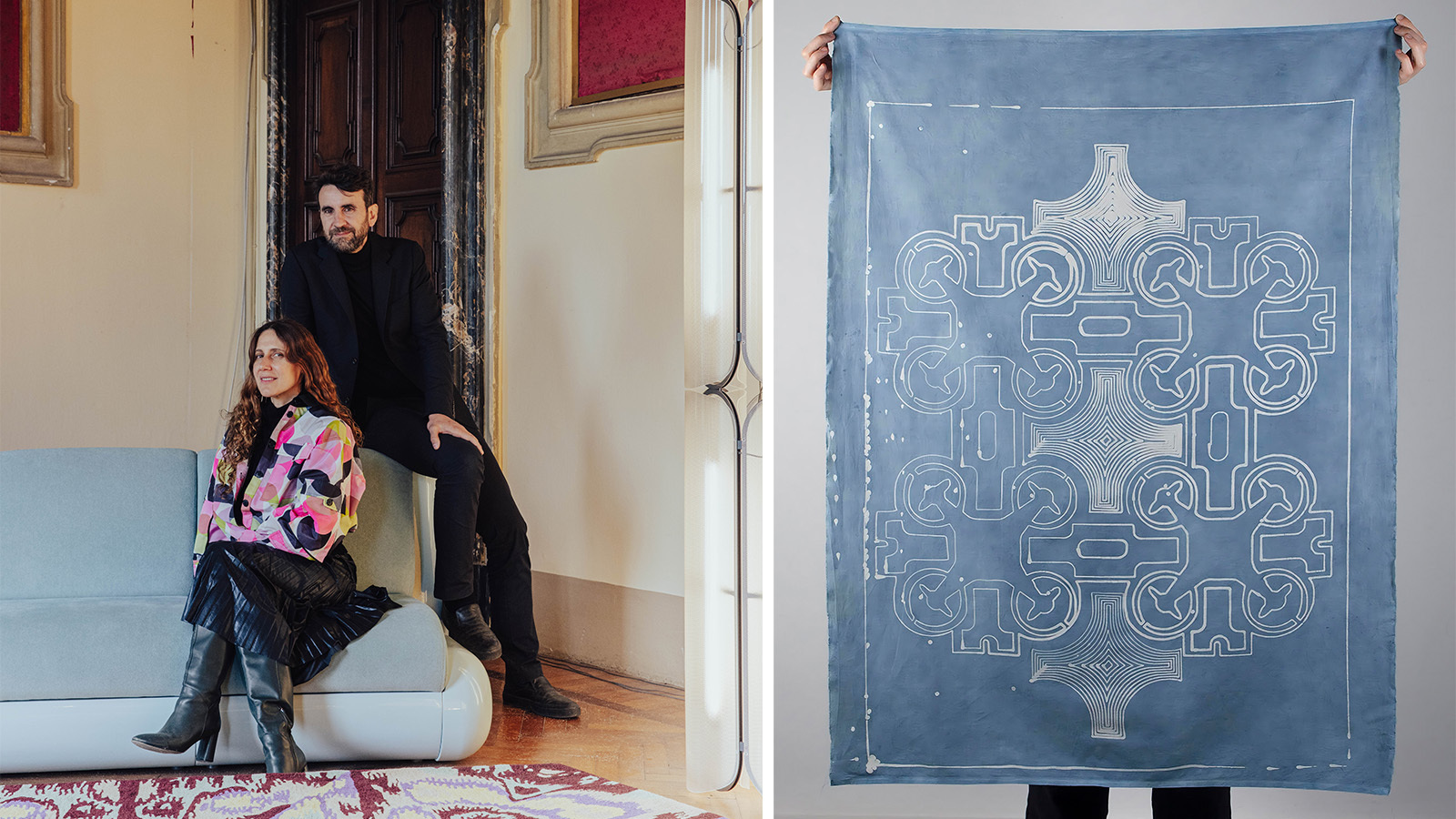
Following the announcement earlier in 2024 of a partnership with Studio Urquiola, Frankfurt's Heimtextil, the world's largest textile fair, has revealed a new collaboration with Alcova Milano – one of the most celebrated (and crowded) design platforms during Milan Design Week – for its Heimtextil Trends 25/26 showcase.
‘The decision stems from how Alcova’s founders, Valentina Ciuffi and Joseph Grima, masterfully blend contemporary art, design, and architecture into inspiring exhibitions and immersive installations,’ says Olaf Schmidt, vice president Textiles & Textile Technologies of the Messe Frankfurt Group, the trade fair and event organiser behind Heimtextil.
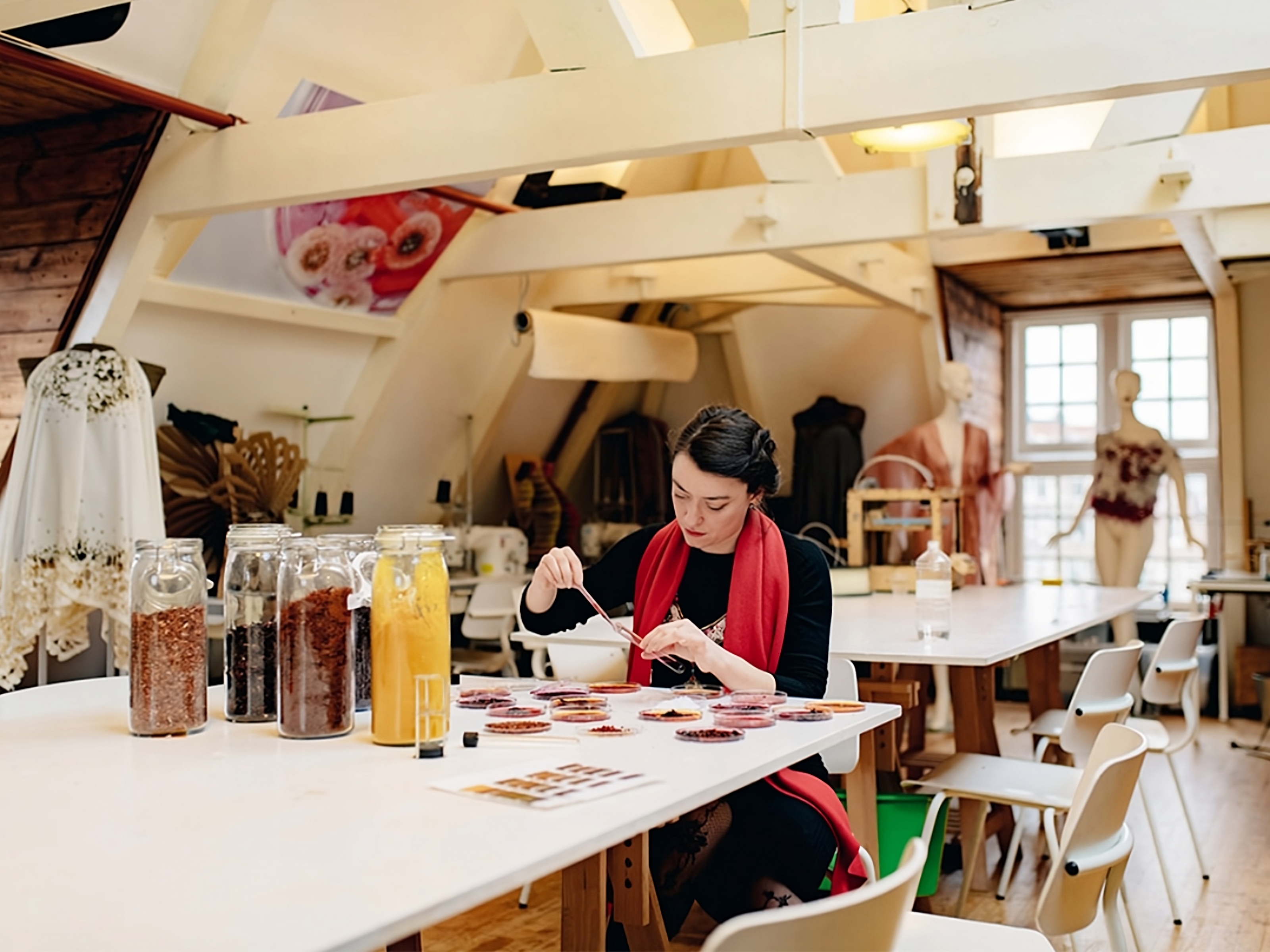
Among textile experts and innovators with whom Alcova has collaborated on Heimtextil Trends 25/26 is Waag's TextileLab in Amsterdam. Pictured is co-founder and lab lead Cecilia Raspanti, working on plant and bacteria pigments
With Alcova locations including a defunct cake factory, an abandoned military hospital, and an old villa (see Alcova Milano 2024), what makes the annual event a must-see for Fuorisalone attendees, despite the hectic calendar, is Ciuffi and Grima's ability to discover and transform unconventional venues into long-lasting experiences. ‘This perfectly aligns with our vision of Heimtextil, where trends are not just about forecasting new colours and materials’ says Schmidt. ‘Trends evolve in a dynamic interplay, and by reconnecting with forgotten practices, we can better understand the present and shape the future.’
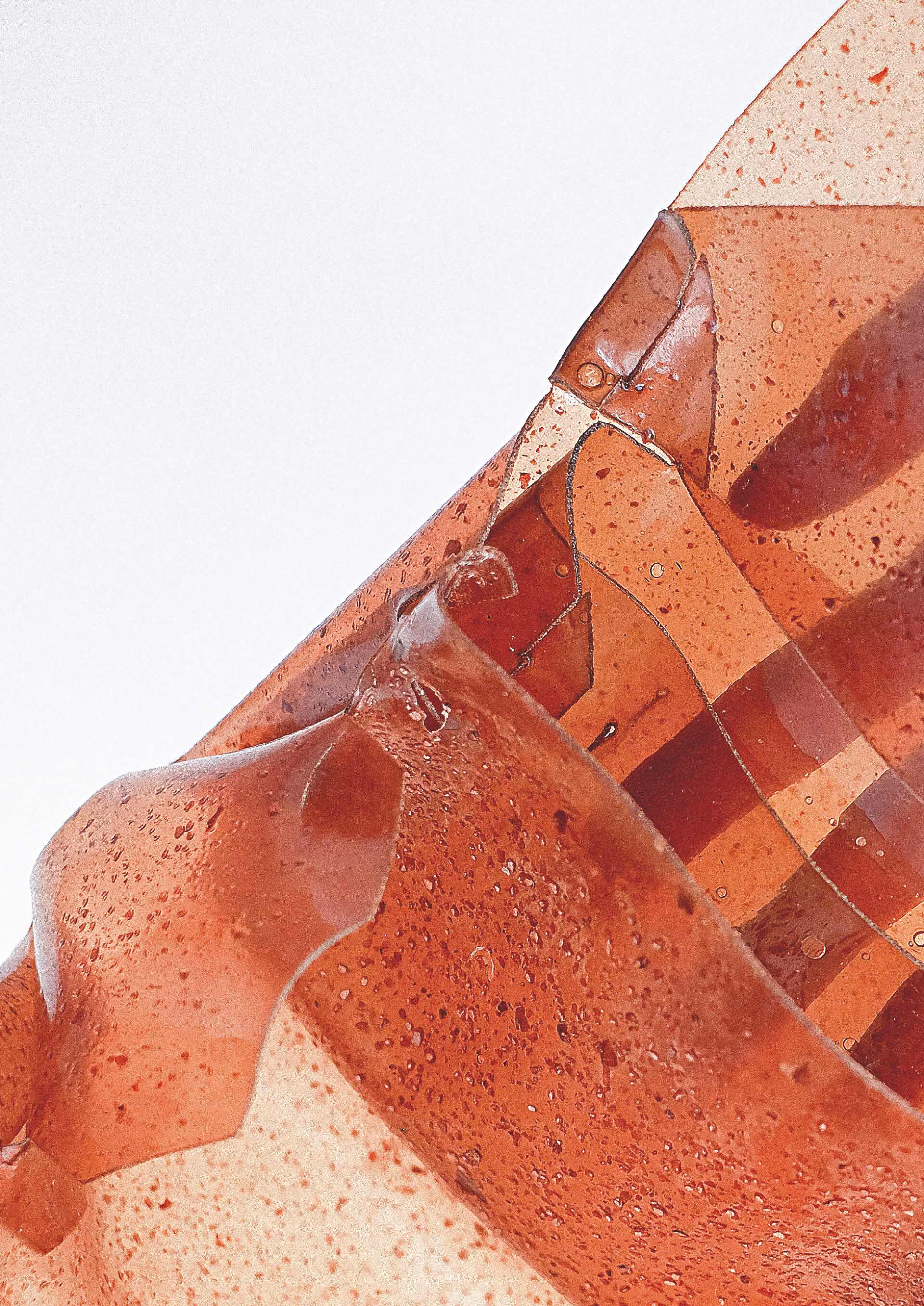
Ephemeral Fashion Lab by Beatriz Sandini, a research project undertaken as part of the Fabricacademy programme at Waag
For Ciuffi and Grima, Heimtextil is not just about forecasting trends – it’s about using textiles as a lens to explore broader cultural, social, and environmental narratives: ‘It’s a space where the past and future collide in a way that feels alive and relevant to how we approach contemporary design.’ Since the beginning, the duo have been intrigued with the opportunity to investigate textiles as cultural identifiers and communicators, rather than as products. They recognise that textiles are intertwined with a variety of stories, including craft, technology, sustainability, and social change.
‘We saw Heimtextil as a platform to curate those narratives, to bring together voices from diverse disciplines, and to challenge how textiles can shape future design practices,’ they say. The challenge was to move beyond the surface of textiles, beyond the materiality and aesthetics, and look at the systems behind them: ‘We wanted to dig deep into the processes that create textiles, the invisible infrastructures, the ethical questions, and the environmental impact. The opportunity came in using this platform to provoke real conversations about sustainability and circularity, and at the same time, to envision new production systems that don't sacrifice beauty,’ say Ciuffi and Grima.
Alcova’s approach to Heimtextil Trends 25/26

Designer Eugenia Morpungo, who explores the 'true costs' of textile and fashion production. Pictured is a past experiment in shoe production, ‘Don't Run Beta’, in collaboration with Juan Montero Valdez
The theme ‘Future Continuous’ refers linguistically to the English tense used to describe activities that will be ongoing in the future, but metaphorically, it evokes a continuous process of renewal and transformation inherent in future making, where the past is never fully left behind, but instead re-evaluated and revived: ‘This perpetual motion calls for a new understanding of change, inviting fresh narratives that enable us to interpret the present as both observers of the past and future prognosticators. It reflects Alcova’s experimental approach, where design pieces engage in a powerful dialogue with the surrounding architecture.’

An example of artist Janis Jefferies’ ‘Woven Sound’ textile research series; image from ‘sax + brush + Swarm Techtiles’ recording, 11 May 2006 (Tim Blackwell, Janis Jefferies, human performers)
Ciuffi and Grima conducted interviews with designers, textile researchers, and industry leaders from their network to dive deeply into the processes that create textiles. They talked to artist and writer Janis Jefferies, renowned for her pioneering work in textile research; interior designer Ilse Crawford; Christine Ladstätter, innovation manager of outdoor clothing brand Salewa; Dirk Vantyghem, director general of Euratex (European Apparel and Textile Confederation); Simone van der Burg and Lucas Evers, group heads at Amsterdam's interdisciplinary institute WAAG; and with Eugenia Morpurgo, an independent Italian designer researching the impact that production processes have on society.
Receive our daily digest of inspiration, escapism and design stories from around the world direct to your inbox.

Heimtextil Trends 25/26 will also address circularity. Seen here, fabric waste documented by photographer Frankie Le Nguyen
The conversations spanned from politics and history to data ethics and sustainable agriculture: ‘One of the most unexpected outcomes was realising how deeply intertwined textiles are with systems we don’t often associate them with – like agriculture,’ say Alcova’s duo. ‘These conversations opened up a dialogue about how materials can be more than just commodities: they can be regenerative, ethical, and political. The connection between textiles and farming, for example, sparked new ideas about localised production and the role of natural fibres in shifting away from extractive, oil-based systems.’
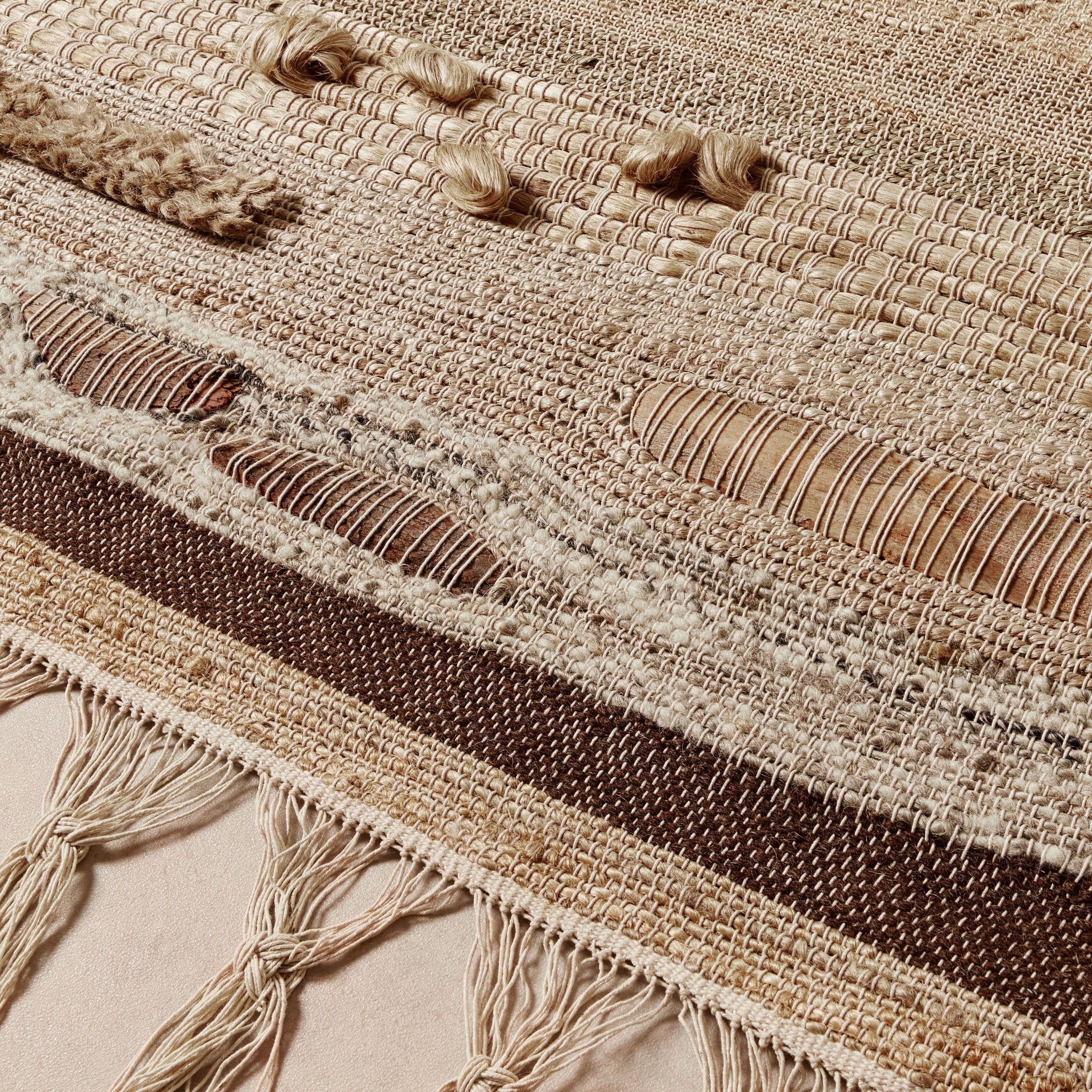
Expect a focus on natural fibres. Seen here, ‘Wellbeing’ collection, 2019, by Ilse Crawford’s StudioIlse for Nanimarquina
The findings of these interviews also had an impact on the colour palette that will be introduced during Heimtextil Trend 25/26, from Naturally Uneven Green to End of Petrol and Imperfect Pink: ‘These colours weave together ideas that balance the interplay between tradition and innovation – natural, unbleached tones meet dynamic, vibrant hues, reflecting the ongoing tension between the past and the future,’ says Schmidt.
New trends will be presented also in terms of materials, building processes, and textile design: ‘You can expect a strong presence of natural fibres like linen, hemp, and flax, complemented by cutting-edge innovations such as lab-grown textiles and bio-based materials,’ say Ciuffi and Grima. ‘The Trend Arena installation at Heimtextil will be a striking narrative element, nodding to the behind-the-scenes of textile production, transforming the unseen processes into a source of inspiration and surprise’.
Heimtextil 2025 will be held from 14-17 January 2025, heimtextil.messefrankfurt.com
Cristina Kiran Piotti is an Italian-Indian freelance journalist. After completing her studies in journalism in Milan, she pursued a master's degree in the economic relations between Italy and India at the Ca' Foscari Challenge School in Venice. She splits her time between Milan and Mumbai and, since 2008, she has concentrated her work mostly on design, current affairs, and culture stories, often drawing on her enduring passion for geopolitics. She writes for several publications in both English and Italian, and she is a consultant for communication firms and publishing houses.
-
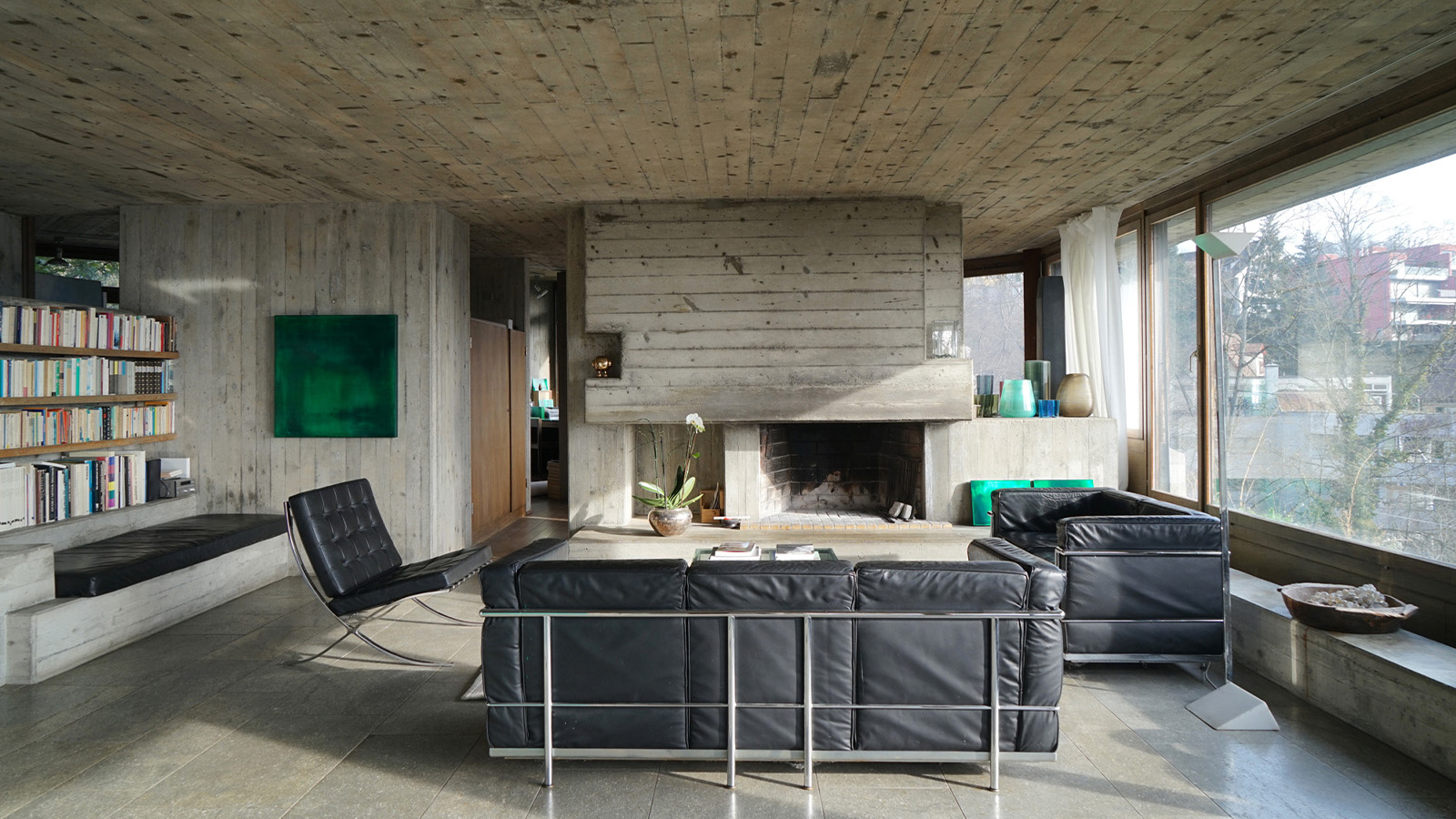 Inside architect Andrés Liesch's modernist home, influenced by Frank Lloyd Wright
Inside architect Andrés Liesch's modernist home, influenced by Frank Lloyd WrightAndrés Liesch's fascination with an American modernist master played a crucial role in the development of the little-known Swiss architect's geometrically sophisticated portfolio
-
 Volvo’s quest for safety has resulted in this new, ultra-legible in-car typeface, Volvo Centum
Volvo’s quest for safety has resulted in this new, ultra-legible in-car typeface, Volvo CentumDalton Maag designs a new sans serif typeface for the Swedish carmaker, Volvo Centum, building on the brand’s strong safety ethos
-
 We asked six creative leaders to tell us their design predictions for the year ahead
We asked six creative leaders to tell us their design predictions for the year aheadWhat will be the trends shaping the design world in 2026? Six creative leaders share their creative predictions for next year, alongside some wise advice: be present, connect, embrace AI
-
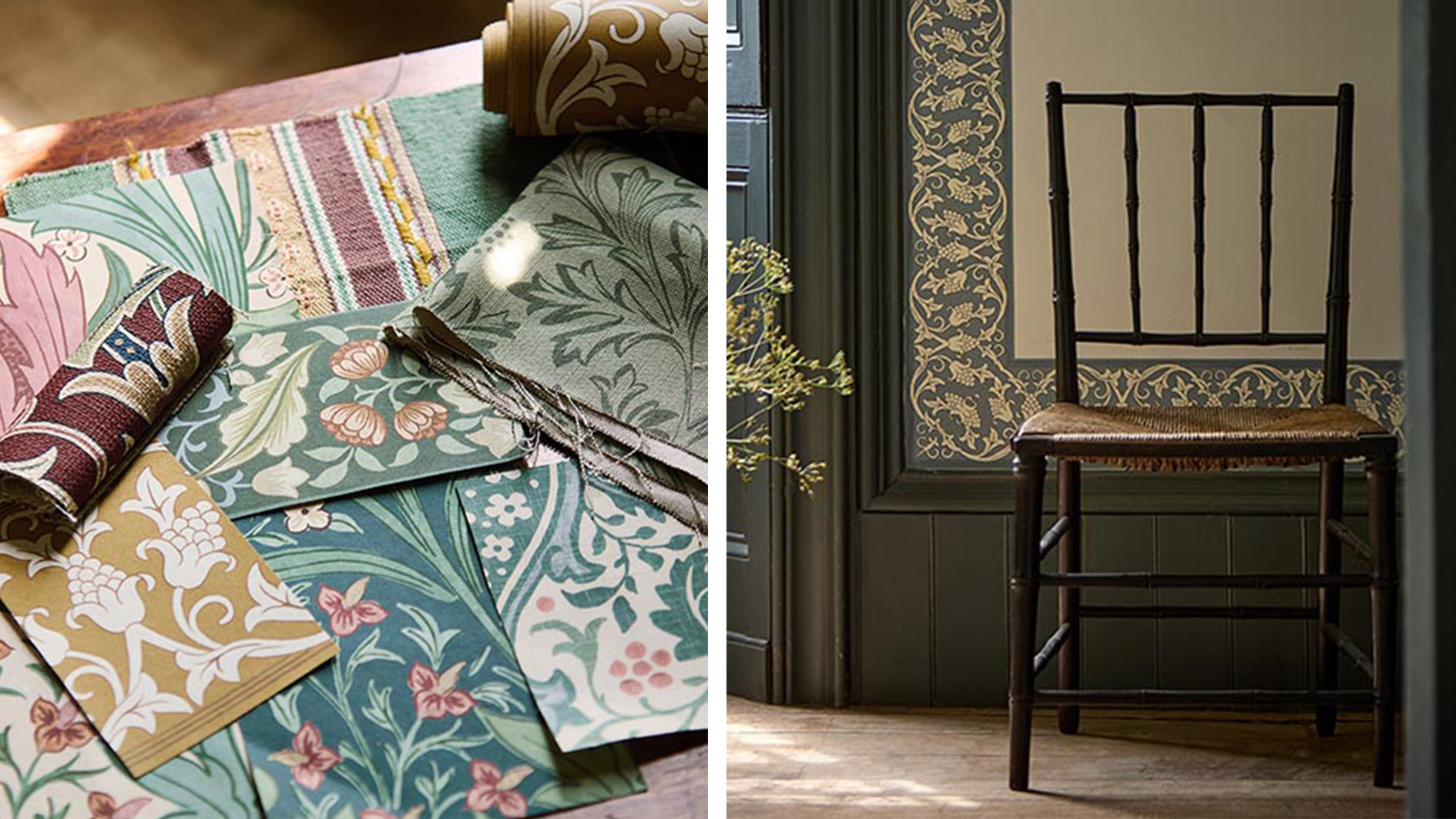 Lost William Morris designs are being revived and completed for a new collection
Lost William Morris designs are being revived and completed for a new collectionWhen The Huntington in California discovered incomplete William Morris designs in its archive, the museum partnered with Morris & Co. to bring the them to life in 'The Unfinished Works'
-
 Patricia Urquiola’s immersive Kvadrat textile forest is inspired by the Nordic landscape
Patricia Urquiola’s immersive Kvadrat textile forest is inspired by the Nordic landscapeDuring Chart 2025, Patricia Urquiola and Danish designers Tableau team up to present a textile installation showcasing Kvadrat’s nature-inspired new collection
-
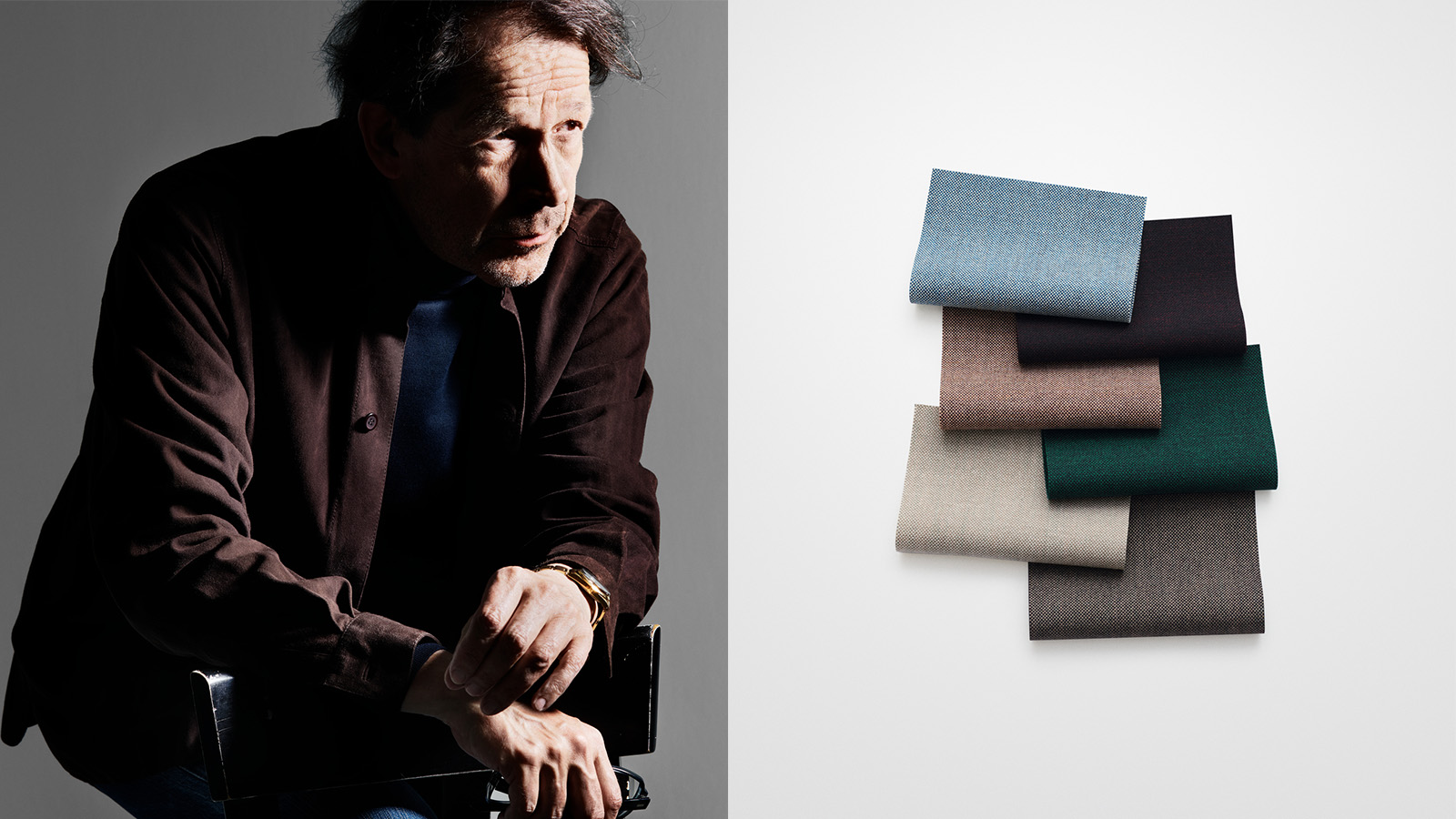 Kvadrat’s new ‘holy grail’ product by Peter Saville is inspired by spray-painted sheep
Kvadrat’s new ‘holy grail’ product by Peter Saville is inspired by spray-painted sheepThe new ‘Technicolour’ textile range celebrates Britain's craftsmanship, colourful sheep, and drizzly weather – and its designer would love it on a sofa
-
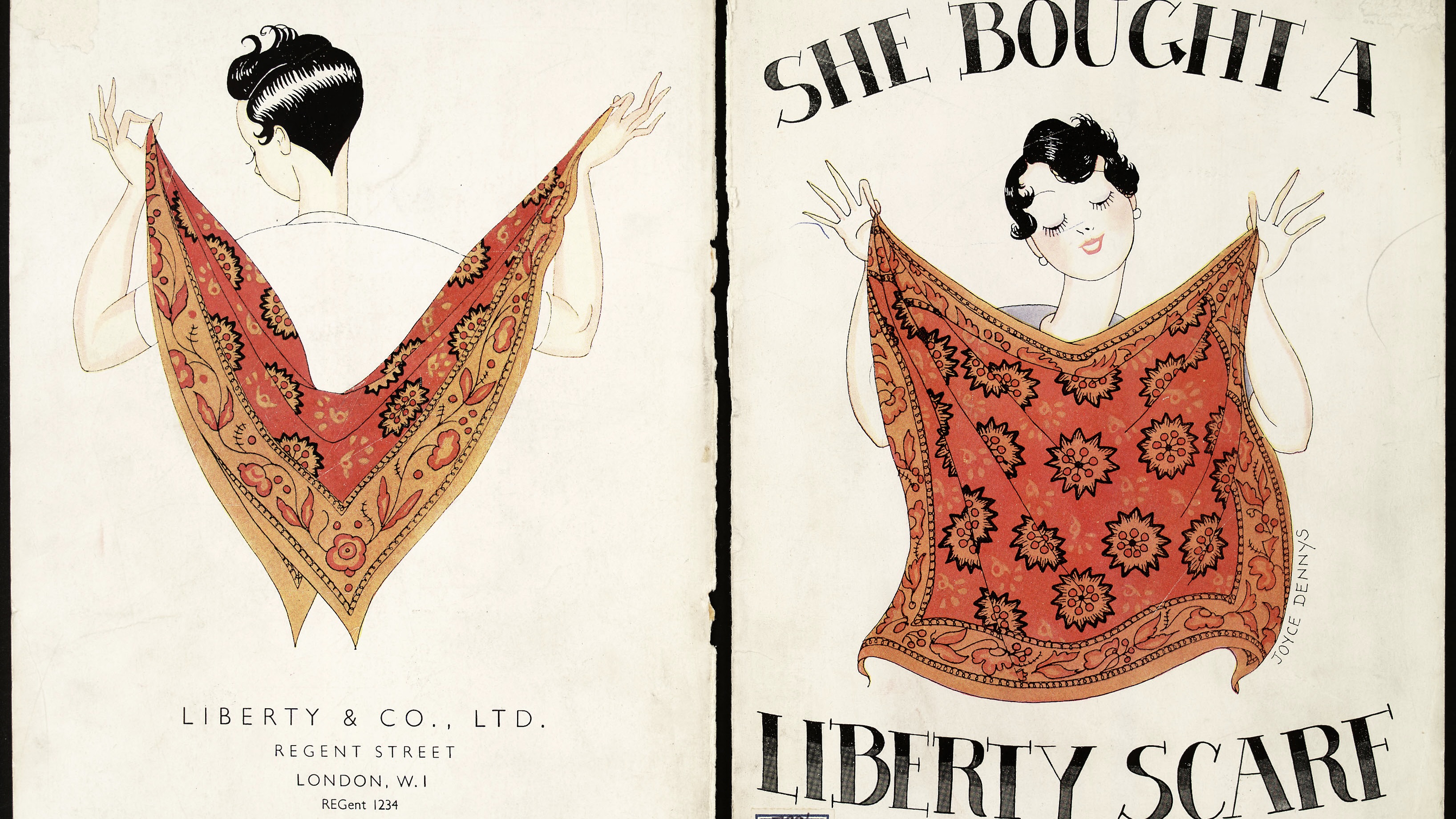 Liberty at 150: a history of the brand in 10 objects
Liberty at 150: a history of the brand in 10 objectsLiberty is marking its 150th anniversary; to celebrate, we remember products and prints that helped make the department store the cultural touchpoint it is today
-
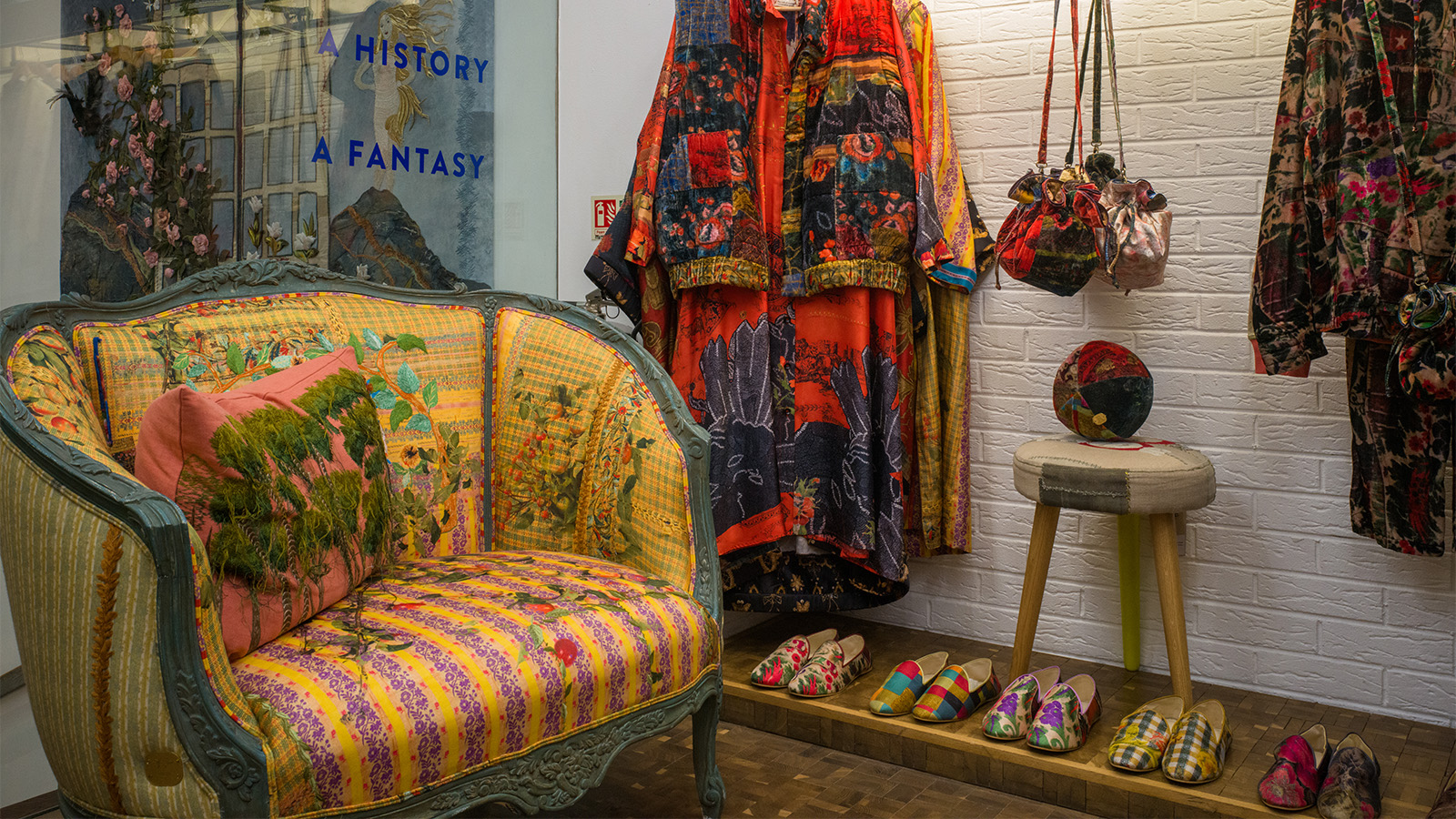 This Beirut design collective threads untold stories into upholstered antique furniture
This Beirut design collective threads untold stories into upholstered antique furnitureBeirut-based Bokja opens a Notting Hill pop-up that's a temple to textiles, from upholstered furniture to embroidered cushions crafted by artisans (until 25 March 2025)
-
 15 highlights from Heimtextil: spot the textile trends for 2025
15 highlights from Heimtextil: spot the textile trends for 2025We were at textile trade fair Heimtextil 2025 in Frankfurt last week – here are the trendsetters and names to know among innovative launches, from health-boosting lava fabric to sheets made of milk
-
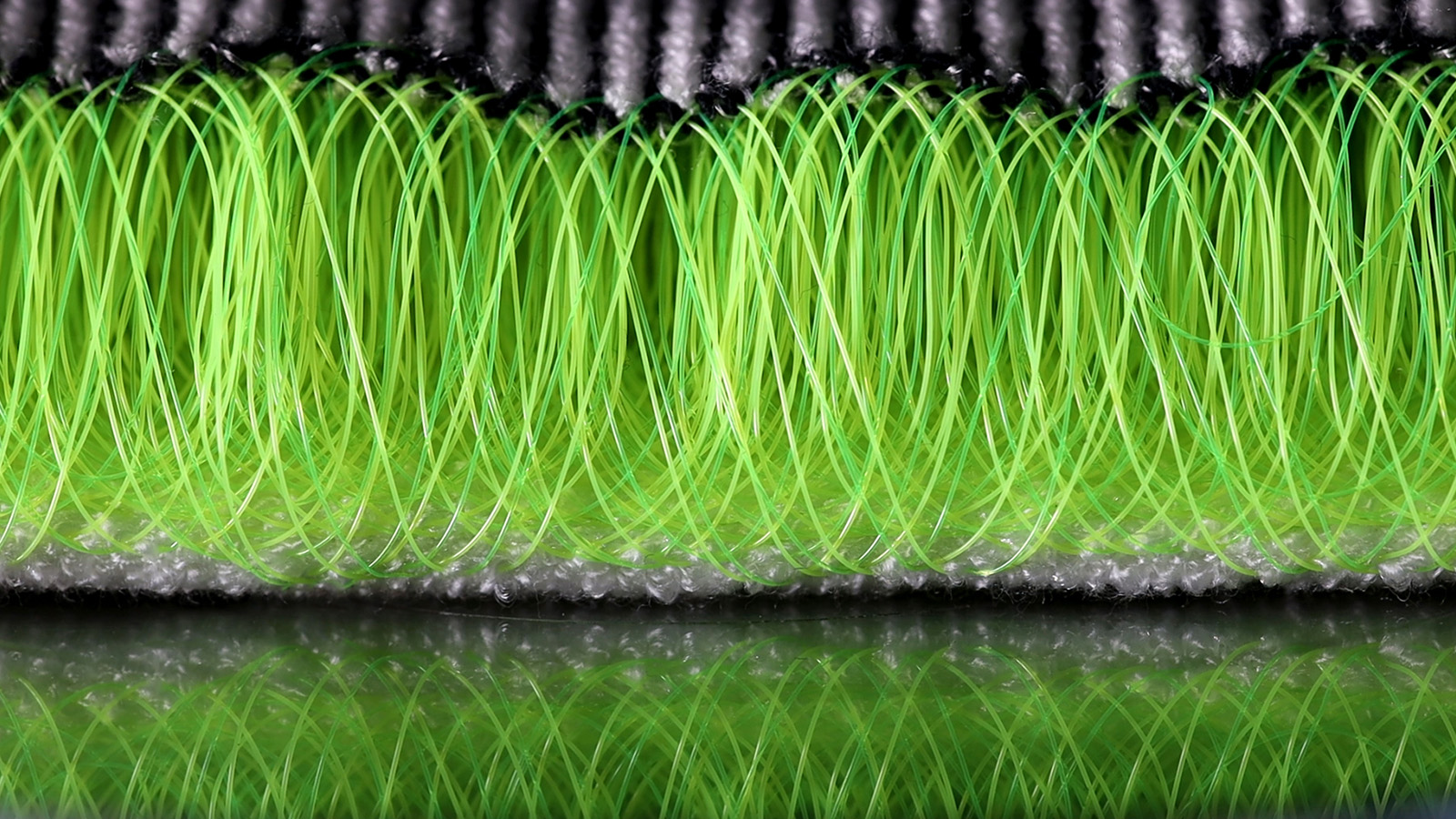 Is Emeco's 'No Foam KNIT' a sustainable answer to synthetic upholstery textiles?
Is Emeco's 'No Foam KNIT' a sustainable answer to synthetic upholstery textiles?'Make more with less' is Emeco's guiding light. Now, the US furniture maker's new mono-material textile, the 'No Foam KNIT', may offer a sustainable solution to upholstery materials
-
 Hella Jongerius’ ‘Angry Animals’ take a humorous and poignant bite out of the climate crisis
Hella Jongerius’ ‘Angry Animals’ take a humorous and poignant bite out of the climate crisisAt Salon 94 Design in New York, Hella Jongerius presents animal ceramics, ‘Bead Tables’ and experimental ‘Textile Studies’ – three series that challenge traditional ideas about function, craft, and narrative